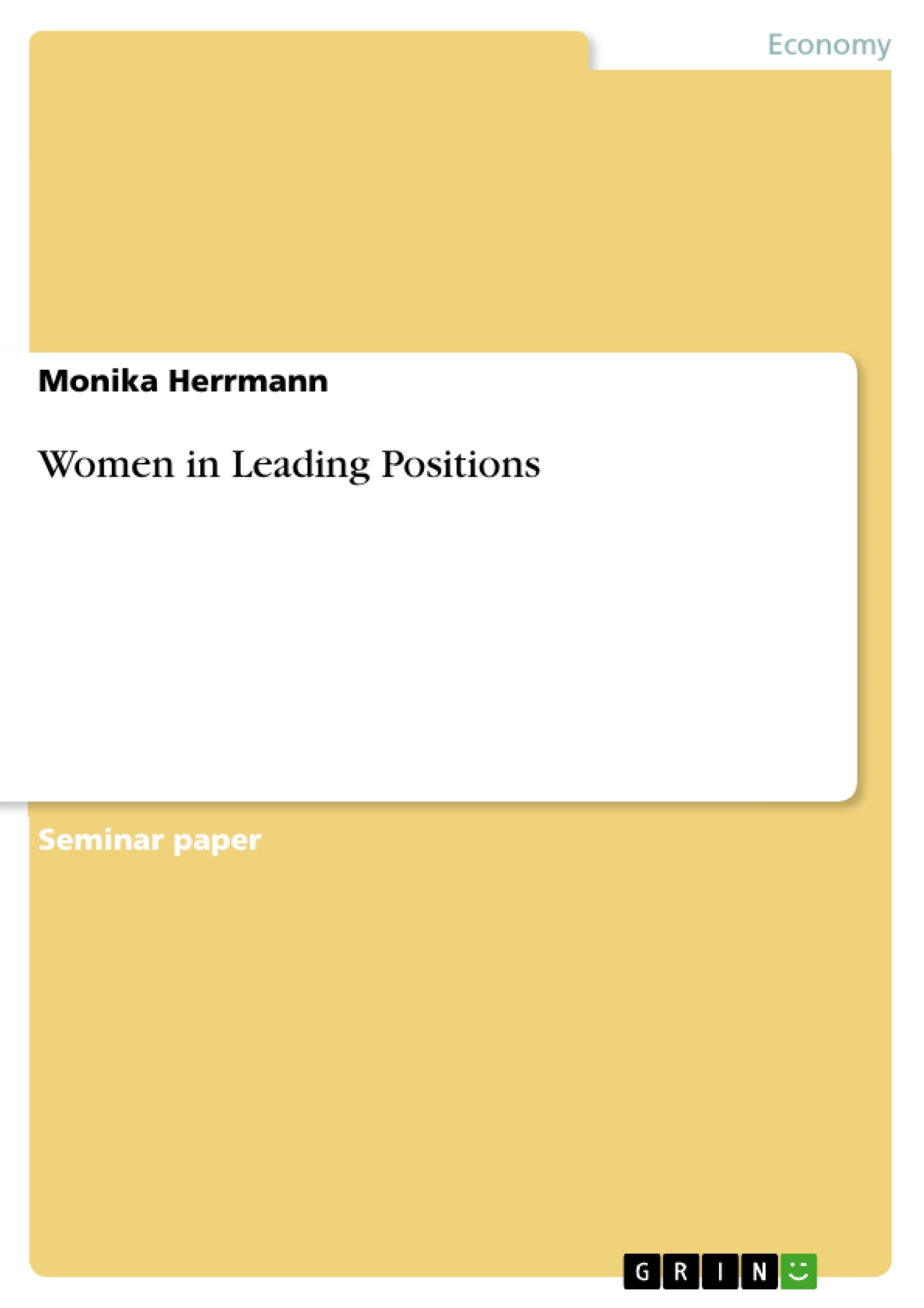A study from the European Union proves that there is no gender balance amongst board members in the largest publicly listed companies. Only Norway shows nearly a gender balance with 42 % of women in such leading positions. This figure is the result of a legal quota that was introduced by the Norway Government. In Germany 15 % of companies’ board members are female. With this portion Germany is on the average of the European Union.
In the 30 DAX-companies the portion is still less. Only 4 out of 184 board members in the 30- DAX-companies are female. And this is a recently development. The first woman was Mrs. Kux in the board of the Siemens-group just in 2008. Three further women became boardmembers in the DAX-companies E.ON, SAP and Siemens in 2009.
Although in Germany more girls than boys have a school-leaving examination that qualifies for university entrance and female alumni achieve better results in study than their male colleagues the number of women in high positions is still too little. So a shortage of qualified women cannot be the reason for these facts.
Inhaltsverzeichnis (Table of Contents)
- Current situation - Figures and facts.
- Reasons for this situation in Germany..
- The role of women in managers' head
- Kids or career..
- Choice of profession.........
- Women think about things too long
- Different motivations
- Unequal payment...
- Gender diversity - The key to economic growth
- Current situation in the society - The demographic trend.
- Economic advantages..
- Current development......
- Governmental measures in Germany
- Examples from the economy..
- Conclusion..
Zielsetzung und Themenschwerpunkte (Objectives and Key Themes)
This report aims to demonstrate the benefits of gender diversity in business. It explores the current situation of women in leadership positions, the reasons behind their underrepresentation, and the positive impact of gender-balanced teams on the economy. The report also examines the current development in business, society, and politics concerning this issue.
- Gender diversity in business
- Reasons for underrepresentation of women in leadership positions
- Economic advantages of gender-mixed teams
- Current trends in business, society, and politics
- The demographic trend and its impact on the labor market
Zusammenfassung der Kapitel (Chapter Summaries)
The report begins by presenting figures and facts about the current situation of women in leadership positions in Germany and the European Union. It highlights the significant gender imbalance, particularly in the board members of large publicly listed companies. The report then delves into the reasons behind this underrepresentation, examining factors such as societal expectations, career choices, and unequal pay.
The next section focuses on the economic advantages of gender diversity. It emphasizes the importance of gender-balanced teams for business growth and competitiveness, particularly in light of the demographic trend and the increasing need for skilled workers.
Schlüsselwörter (Keywords)
This report focuses on the themes of gender diversity, leadership, economic growth, gender balance, underrepresentation of women, societal expectations, career choices, unequal pay, and demographic trends.
- Quote paper
- Monika Herrmann (Author), 2011, Women in Leading Positions, Munich, GRIN Verlag, https://www.grin.com/document/198410



